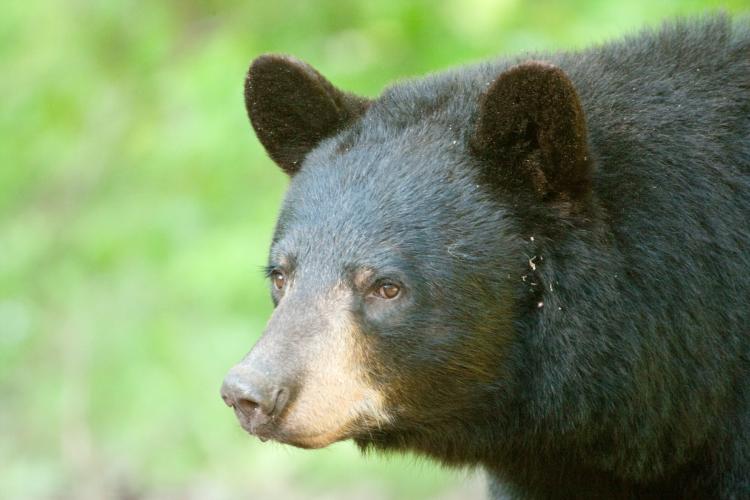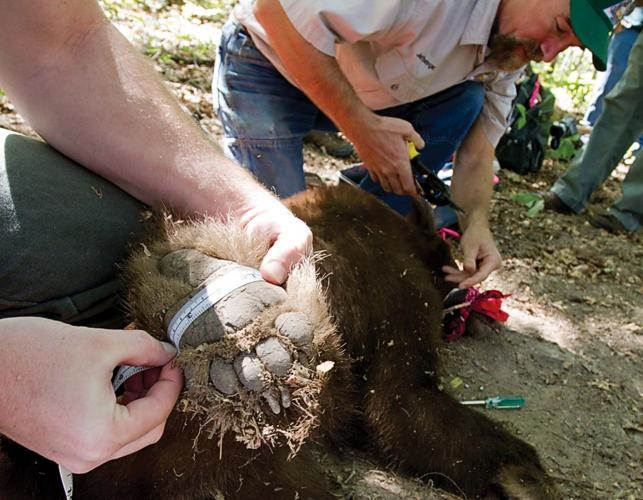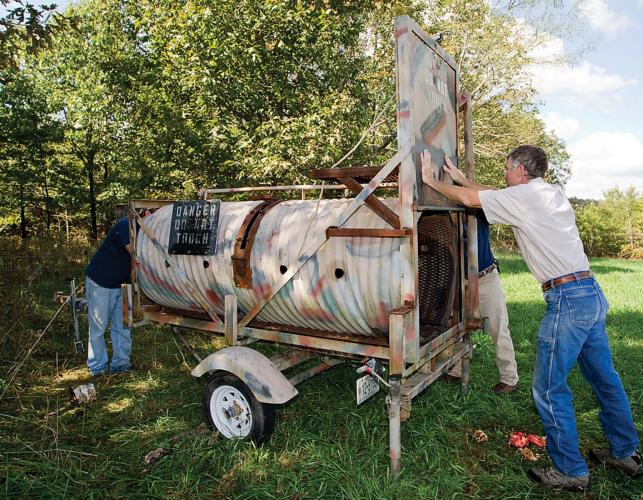
Xplor reconnects kids to nature and helps them find adventure in their own backyard. Free to residents of Missouri.








SPRINGIELD, Mo. -- For many years, Missouri’s black bears have been elusive to biologists wanting to learn more about them. Now, thanks to data being gleaned from a research study that began in 2010, hunches are beginning to be replaced with hard facts. Information collected from live-trapping, radio collars and hair snaring is taking away much of the mystery that has surrounded black bears in Missouri.
The goal of Missouri Department of Conservation (MDC) biologists is to use this information to better manage one of the state’s largest wild mammals. MDC’s black-bear research study is a joint effort of the Conservation Department, the University of Missouri-Columbia and Mississippi State University. Safari Club International Foundation is providing funding assistance.
To date, MDC biologists have fitted 61 adult bears with radio collars. They have also set 785 hair snares in 11 counties in the southern part of the state. These snares are small wire enclosures that collect small tufts of fur from bears crossing the wire to get to the bait in the center. These tufts of fur, and the tiny skin follicles attached to them, can reveal valuable genetic information about the bears. Hair samples have been collected from 141 bears.
MDC Resource Scientist Jeff Beringer is the project leader of the research study. He said that information gathered so far has led to a state-wide population estimate of approximately 225 black bears, although much work remains to validate this preliminary estimate.
Home ranges of female bears show that most are in four separate reproducing populations ranging over 10 counties in south-central Missouri.
DNA evidence suggests the largest of these populations, located in Webster and Douglas counties, may be a remnant of Missouri’s original black bear population. Those elsewhere in the state are presumably descended from bears brought to Arkansas from 1958 through the late 1960s as part of a re-introduction program and later dispersed into Missouri. Beringer believes that the other populations in Missouri developed when female bears brought to Arkansas travelled north after being released in an effort to return to their birth areas in the upper Midwest.
Research data has also revealed valuable information about the annual life cycle of a Missouri bear. Bears in Missouri spend nearly all their time in forested areas and use wooded corridors when moving cross-country. Adult bears can consume as much as 20,000 calories per day – mostly in the form of acorns – in preparation for winter dormancy. Females den earlier than males and males emerge from winter dormancy earlier than females. The exact timing of this emergence depends on weather and on how much fat they are able to accumulate before denning.
June is the peak month for breeding. This is also the peak month for dispersal of young male bears. Young females tend to remain near or even with their mothers in their home ranges. The study is an example of how the Missouri Department of Conservation works with people and for people to sustain healthy forests, fish and wildlife.
The study isn’t completed yet. Beringer said there’s still more to be learned about the black bear in this state.
“We think we know how many bears we have now,” he said. “Our next project is to figure out how fast our population is growing. We want to learn female survival rates, how old are they when they have their first litter, how many litters do they have in a lifetime, how many cubs do they have and what is the survival rate of the cubs.”
As a way of reducing the number of bear-human conflicts occurring in Missouri, one of the outcomes of Missouri’s bear study might be the institution of a limited bear-hunting season. If the data supports a hunting opportunity, Beringer said it would be a highly regulated season favoring the harvest of males and would take place in the winter when females are in their dens. However, before recommending a hunting season, Beringer said he needs enough information to predict how an annual harvest will affect the overall population.
In the meantime, Missourians should keep in mind that early spring is the time of year when bear activity increases in Missouri. This period, which begins in spring and stretches into early summer, is when black bears may appear around farms and rural outbuildings in search of food. Black bears are inquisitive and intelligent and that’s what can get them into trouble.
Like any wild animal, black bears are constantly searching for their next meal. When they are successful at finding food, they remember where it came from. Most problems people have with bears come from them raiding campgrounds, garbage bins, bird feeders, orchards and beehives.
Missourians care about conserving forests, fish and wildlife, but some people’s fascination with bears over-rides their conservation-oriented instincts. This happens when bears are purposely fed by people who think they’re helping them survive or are trying to lure them into range for a good photo. If a bear visits an area and is rewarded with food, it will very likely return. Though they are generally not aggressive, they are powerful and can cause substantial damage to buildings, trailers, vehicles, and just about anything else that they view as an obstruction in their search for food.
“We have had an increase in bear/human conflicts in recent years,” Beringer said. “Most conflicts can be prevented if folks do not give bears access to food or garbage.”
For more information on black bears in Missouri, including the research project, sightings, and preventing and dealing with black bears around potential food sources, visit MDC online at mdc.mo.gov and search “black bear.”